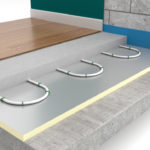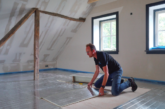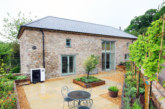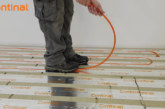With energy bills forever on the increase, anything housebuilders and developers can offer purchasers in the way of long-term savings is an extra selling point, so can underfloor heating be one option? John Gittens Business Development Director from Maincor, takes a look.
Creating luxury spaces that fulfil a dream for the potential purchaser is, of course, largely down to the overall look. Top spec fixtures and fittings all help entice the buyer but when it comes to standing out from the competition, housebuilders and developers should be mindful of some of the less obvious things too. Underfloor heating is a good case in point; it unarguably achieves a luxury finish and makes a property more desirable, but that’s not the only advantage that developers can use as a hook.
As properties become more open-plan there is less wall space for radiators and underfloor heating taps into the trend for all things minimal in the modern home. Because it’s out of sight it will also be in keeping with any style of property and gives the interior designers much more creative freedom. With the trend being very much towards wood and tiled flooring for ground floors as opposed to carpet, underfloor heating offers the homeowner peace of mind that things won’t get too cold underfoot, even in mid-winter.
These are all practical advantages that are worth highlighting as reasons why house builders and developers should invest in underfloor heating for their projects, but there is another key point that will tick a lot of boxes with potential customers. This is the eco benefits of underfloor heating when compared to conventional systems. Underfloor heating requires much lower water temperatures, as the large surface area of the floor is enough to warm the room efficiently as the heat rises.
In fact, an underfloor heating system will generally run at around 45 degrees as opposed to circa 80 degrees used in radiator systems, which means that there are energy and running cost savings to be made, especially when used with renewable heat sources such as heat pumps. This results in lower CO2 emissions, which is good news for the eco conscious homeowner and developers looking to meet sustainability requirements.
When it comes to a developer’s sales brochure though, the USP with underfloor heating has to be the energy savings for the homeowner. Put simply, this means lower utility bills and when a purchaser is about to pay out many hundreds of thousands of pounds on a new home, any potential long-term monetary savings are likely to be music to their ears. As each room can be heated on an individual basis with underfloor heating, the user has complete control over the temperature throughout the property, so the rooms that are used the most can be kept at a slightly higher temperature, for example. Greater control and lower energy bills are, in a nutshell, the selling points that underfloor heating gifts the developer.
Water based underfloor heating systems work by turning the entire floor into one large low temperature radiator which is heated via a network of pipes that are embedded within the floor. Since the floor (the ‘radiator’) is so large it only needs to run at a low temperature to heat the room. This means that the water that flows around the floor needs to be at a far lower temperature than a traditional radiator system.
For solid floors underfloor heating pipes are laid and fixed on to floor grade insulation which is placed over a solid concrete base and then screed is put over the top of the pipes. Options are also available for suspended, floating and low profile floors. For low profile floors, for example, systems are available that utilise 12mm pipe laid into pre-routed gypsum or polystyrene panels.
Using a wide range of wired and radio controlled systems, including app enabled technology, means that room temperatures can be individually controlled, allowing the occupier maximum flexibility, whilst increasing the energy efficiency of the building.
In the past, the biggest drawback of specifying underfloor heating would have been the material and labour costs involved with installation. However, that’s no longer the case, meaning there are cost benefits to the developer, as well as to the end user. Today, underfloor heating is straightforward to install regardless of floor construction, whereabouts within the building it is required or the stage of the project.
For house builders and developers looking to wow homebuyers, all of these benefits add up to make underfloor heating a very viable option.










